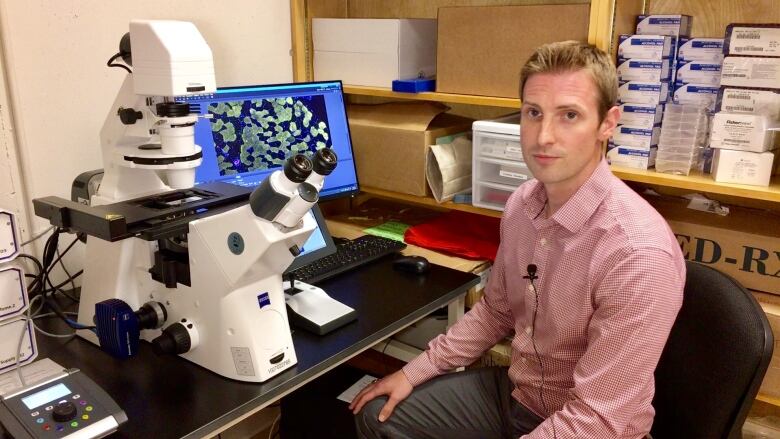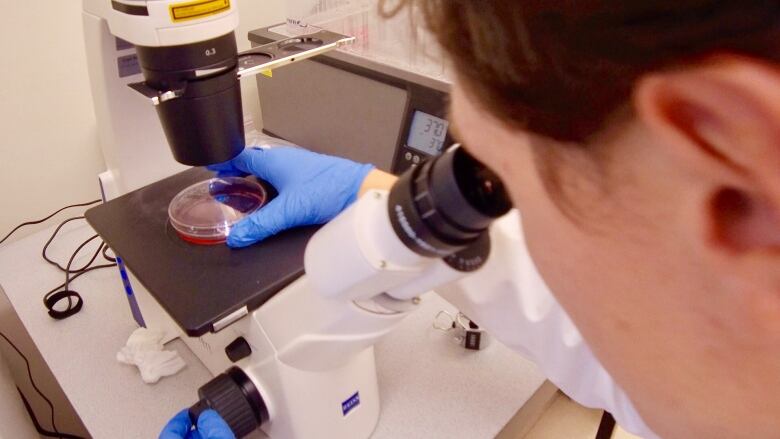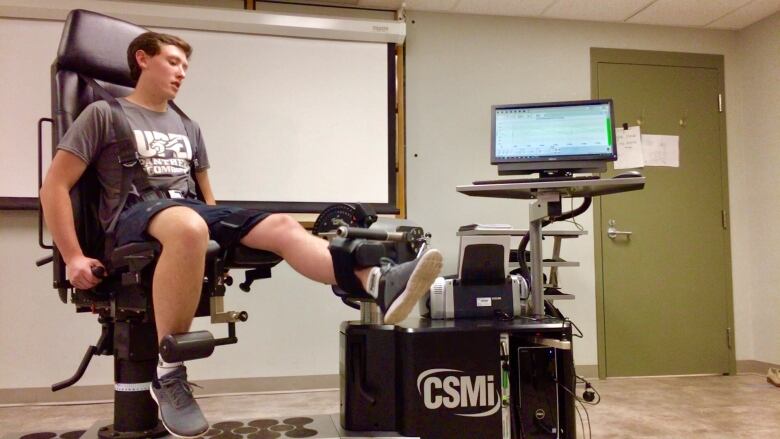Why people lose skeletal muscle mass as they age focus of UPEI study
$461K of new equipment will help researchers determine how exercise could heal muscles

New equipment at a UPEI lab is going to be used to figure out why muscles in older people don't heal as quickly as muscles in younger people.
The Skeletal muscle health and adaptation labin Charlottetown was awarded $461,221 in March from federal and provincial governmentsand private sponsors.
Professor Adam Johnston hopes the new equipment will help determine why older people lose the ability to recover from day-to-day small injuries.

"One of the major problems that we see due to our aging population here in Canada is a disease called sarcopenia, or the age-related loss of muscle tissue," said Johnston.
Keeping people in their homes
The disease has a huge impact, both on quality of life for individuals, as well as to the health care system.
"If you have a loss of muscle mass, then that really impairs your activities of daily living. It's really the first step in moving towards living in a nursing home," said Johnston.
"So figuring out how we can maintain an adequate level of muscle mass throughout our life span is really important to keeping people in their homes."

The physiology lab has a new resistance exercise machine similar to whatyou might see in a typical gym, except this is a lot more complicated: itcan measure muscle and exercise performance in human subjects.
"Often times you'll feel sore afterwards," said Johnston.
"That's minor injuries to skeletal muscle, so part of figuring out how to rehab from an injury or bounce back quicker is understanding what happens to injured skeletal muscles."

That information could be used to try to accelerate the muscle repair process.
Some of the funding went towarda new specialized microscope in the biochemistry lab to study stem cells, called satellite cells,that are found within the muscle tissue.
These cells are responsible for repairing tissue,so Johnston wants to explore what triggers these cells to activate in the body.

"If we can figure out how to improve the activity of these stem cells, maybe we can apply that to elderly populations to increase their stem cell capacity and increase the amount of muscle mass that they have," Johnston said.
- MORE P.E.I. NEWS |'We both just started screaming': Blue lobster surprises fisherman
- MORE P.E.I. NEWS |P.E.I. teenagers' song battles cyberbullying












_(720p).jpg)


 OFFICIAL HD MUSIC VIDEO.jpg)
.jpg)



























































































